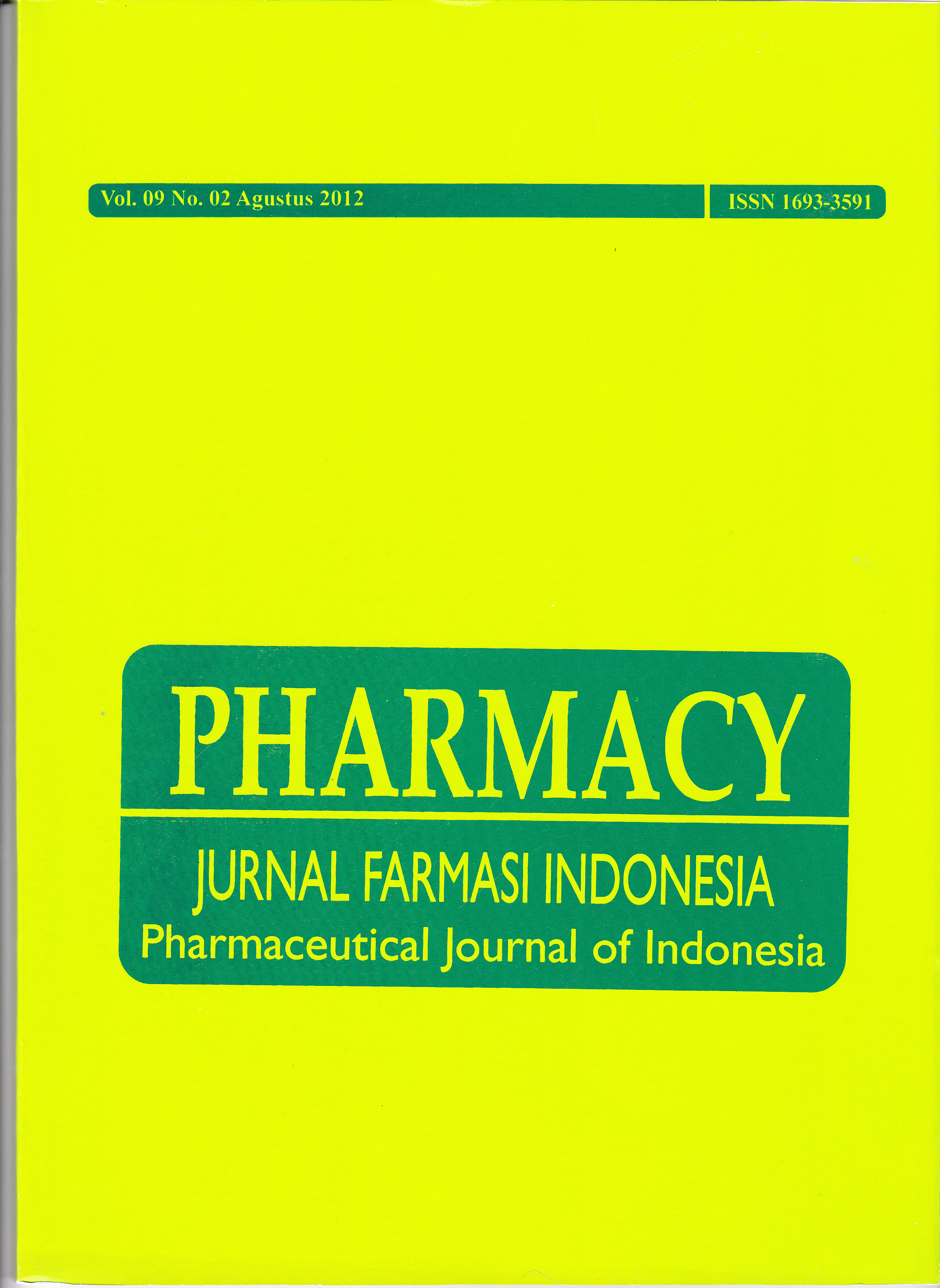ANALISIS CEMARAN LOGAM TIMBAL (Pb) DALAM DAUN CAISIN (Brassica juncea L.) DITANAM DI LOKASI RAMAI DAN SEPI LALU LINTAS KENDARAAN BERMOTOR
DOI:
https://doi.org/10.30595/pharmacy.v9i2.695Abstract
ABSTRAK Telah dilakukan uji cemaran logam berat Timbal (Pb) pada tanaman caisin yang ada di lokasi ramai (Pratin, Karangreja, Purbalingga) dan lokasi sepi (Gombong, Belik, Pemalang). Analisis dilakukan dengan metode destruksi kering menggunakan alat Spektrofotometer Serapan Atom (SSA) pada panjang gelombang 283,3 nm. Dari hasil analisis tanaman caisin didapatkan cemaran Pb pada lokasi ramai 4,88 ppm dan lokasi sepi 4,79 ppm. Kadar tersebut melebihi nilai yang ditetapkan oleh BPOM yaitu 2 ppm. Hasil validasi metode analisis yang dilakukan pada uji linearitas (r) sebesar 0,9952. Dengan harga standar Deviasi (SD) dan relatif standar deviasi (RSD), adalah sebesar 2,93x10-4 dan 2,74%. Pada uji batas deteksi dan batas kuantitasidiperoleh nilai sebesar 0,33ppm dan 1,11 ppm. Kata kunci : timbal (Pb), spektrofotometri serapan atom, caisin ABSTRACT Test contaminans of heavy metal Lead (Pb) have been done to the caisin plant in crowded location (Pratin, Karang Reja, Purbalingga) and quiet location (Gombong, Belik, Pemalang). Analysis done with dry destruction method used Atomic Absorption Spektrofotometry (AAS) instrument at wave length 283,3 nm. From result analysis of caisin plant gets contaminant Lead (Pb) in crowded location 4,88 ppm and quiet location 4,79 ppm. The level is over the number which has been determined by BPOM that is 2 ppm. The result of validation method analysis performed on the test that the linearity obtained for (r) 0,9952, with value Standar Deviation (SD) and Relative Standart Deviation (RSD) in presision test are 2,93x10-4 and 2,74%. And to test limit of detection (LOD) and limit of quantitation (LOQ) with value 0,33 ppm and 1,11 ppm. Keyword: lead (Pb), atomic absorption spectrophotometry, caisinReferences
Backer, C. A., and Van Den Brink, R. C. 1958.Flora of Java (Spermatophytes Only).Noordhooff NV, Groningan, Netherlands.
Christian, G. D. 1994. Analytical Chemistry 5th edition.New York.
Darmono, 1995, Logam dalam Sistem Biologi Makhluk Hidup, Universitas Indonesia Press, Jakarta.
Darmono, 2001, Lingkungan Hidup dan Pencemaran, Universitas Indonesia Press, Jakarta.
Margiyanto, E. 2007. Budidaya Tanaman Sawi. http://zuldesains.wordpress.com. Diakses tanggal 18 Desember 2010
Martaningtyas, D. 2004. Bahaya Cemaran Logam Berat. Artikel (online) (http://www.pikiran-rakyat.com/cetak/0704/29/cakrawala/lainnya08.htm
Riskiyanto, A. 2007.Penetapan Kadar Polutan Pb dalam Kangkung (Ipomoea aquatica. Forsk) Ditanam di Lokasi Ramai dan Sepi Lalu Lintas Kendaraan Bermotor Secara Spektrofotometri Serapan Atom, Skripsi, Fakultas Farmasi, Universitas Muhammadiyah Surakarta :Surakarta.
Santi, D. N. 2001. Pencemaran Udara oleh Timbal (Pb) serta Penanggulanganya.Medan: USU-Press
Sudarmadji, J. Mukono dan Corie I.P. 2006.Toksikologi logam berat B3 dan dampaknya terhadap kesehatan. Jurnal Kesehatan Lingkungan, Vol. 2, No. 2, Januari 2006: 129-142
Downloads
Published
How to Cite
Issue
Section
License
Authors who publish with this journal agree to the following terms:
- Authors retain copyright and grant the journal right of first publication with the work simultaneously licensed under a Creative Commons Attribution 4.0 International License that allows others to share the work with an acknowledgement of the work's authorship and initial publication in this journal.
- Authors are able to enter into separate, additional contractual arrangements for the non-exclusive distribution of the journal's published version of the work (e.g., post it to an institutional repository or publish it in a book), with an acknowledgement of its initial publication in this journal.
- Authors are permitted and encouraged to post their work online (e.g., in institutional repositories or on their website) prior to and during the submission process, as it can lead to productive exchanges, as well as earlier and greater citation of published work (See The Effect of Open Access).






